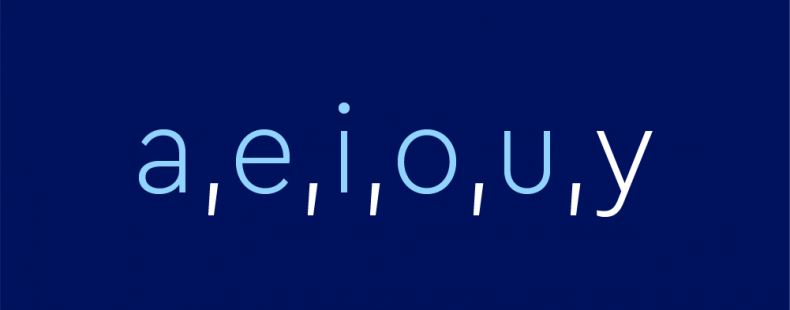You might be able to recite the letters considered vowels in the English language: A, E, I, O, U, and sometimes Y. But what makes a vowel a vowel?
Vowels and consonants are two different categories of sounds that linguists (in the branch of linguistics called phonetics) use to explain how speech sounds work.
In this article, we’ll explore the difference between consonants and vowels and explain why certain letters are considered vowels—and why some can fall into either category depending on which sound they make.
What is the difference between a vowel and a consonant?
Consider the words beet and beat, which feature different spellings for the same sound (homophones). Then consider bat and bait. Their spellings are similar, but their vowel sounds are quite different.
To get around the limitations of written systems, linguists use what is known as the International Phonetic Alphabet (IPA), a set of symbols used to represent the sounds in all the world’s languages regardless of how they are written. Bat is [ bæt ] and bait is [ beɪt ], for instance.
According to phoneticians, a vowel is a speech sound that is made without significant constriction of the flow of air from the lungs. The tongue can be at various heights in the mouth (such as high, mid, or low) and at various positions (front, central, or back). The lips can be variously rounded. Vowels can vary in pitch and loudness, too.
Here’s the part where you get to act like kid. Say “ahh,” but then flick your tongue all around your mouth, wriggle your lips and jaws around, let out the noise at different volumes, but don’t ever fully stop that airflow. You are vowel-ing!
If you do restrict or close your airflow in a significant way, you’re in consonant territory. Where that restriction or closure occurs in your vocal tract determines what consonants you are making. B sounds are produced by bringing the lips together, for instance (bilabials). K sounds are produced by bringing the back of the tongue up to your soft palate (velars). Th sounds are made when the tongue goes between the teeth (interdentals).
Does every language have vowels?
Every language has vowels, but languages vary in the number of vowel sounds they use. While we learn A, E, I, O, U, and sometimes Y, English, depending on speaker and dialect, is generally considered to have at least 14 vowel sounds. (Yeah, our spelling is a delightful hot mess.) Castilian Spanish and Japanese, meanwhile, are generally considered to have five vowel sounds.
Languages also vary in the number of consonants they have. English has at least 24 consonant sounds. Hawaiian has around eight, and Lithuanian has 45—still low compared to some languages in southern Africa!
How vowels and consonants are distributed and patterned together in a language is called phonology.
Are there any words without vowels?
Slavic languages, such as Czech, are famous for the long strings of consonants their languages allow, like this Czech tongue twister: strč prst skrz krk (“stick a finger down your throat”). This will twist English-speaking tongues (and heads), but it’s perfectly normal in Slavic languages, where a certain articulation of R can behave as a syllable all on its own.
This can be called a syllabic consonant, which can fill the vowel slot in a syllable. English can have them in the final syllables of words like bottle and button, among other places. To put it simply, L, R, M, N, and the –ng in sing can have vowel-like properties and be syllabic.
Now, English does have a number of interjections it spells without vowels (and vocalizes without true vowels) that are considered words, such as: brrr, hmm, shh, tsk, pfft, or psst. Most of these are considered onomatopoeia, and imitate sounds we make to perform different actions, such as indicating we’re cold (brr) or demanding quiet (shh).
Generally, however, English words are said and written with at least one vowel.
- Shh … don’t tell anyone but there are actually an abundance of words that don’t use conventional vowels in English. In fact, some even use the letter W as a vowel.
- Nevertheless, there are basic spelling rules that English does (mostly) abide by. Read about them here and see if anything is new to you.












